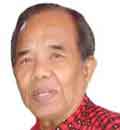Conclusion
For the most part of the past three decades at the time, I had been undergoing a kind of catharsis, a cleansing of my perceptions of Ninoy, from blind idolatry as was that which seized the youth of the early ‘70s to vociferous questioning of his character and intentions right after the Plaza Miranda bombing. In fact, the Plaza Miranda carnage was the turning point in my private ordeal of, on the one hand – persevering in the proletarian revolutionary struggle and yet forever questioning the validity of the protracted Jose Maria Sison-led people’s war of which the workers strike movement was proclaimed to be part and parcel – and on the other hand, clinging on to that revolutionary struggle, knowing fully well that it had its beginnings in Hacienda Luisita with Ninoy Aquino, who else, as principal sponsor. After Ninoy had gathered Jose Maria Sison and Bernabe Buscayno together in 1968 came the re-establishment of the Communist Party of the Philippines on December 26 that year, and the New People’s Army on March 9, 1969. (The latter date, by the way, was spoken of as a laughing matter in the recent reunion of one-time communist revolutionaries at the home of Juaning Rivera, where according to the senior rebels, the NPA was formed earlier than the CPP was established.)
Continue reading with one of these options:
Ad-free access
P 80 per month
(billed annually at P 960)
- Unlimited ad-free access to website articles
- Limited offer: Subscribe today and get digital edition access for free (accessible with up to 3 devices)


